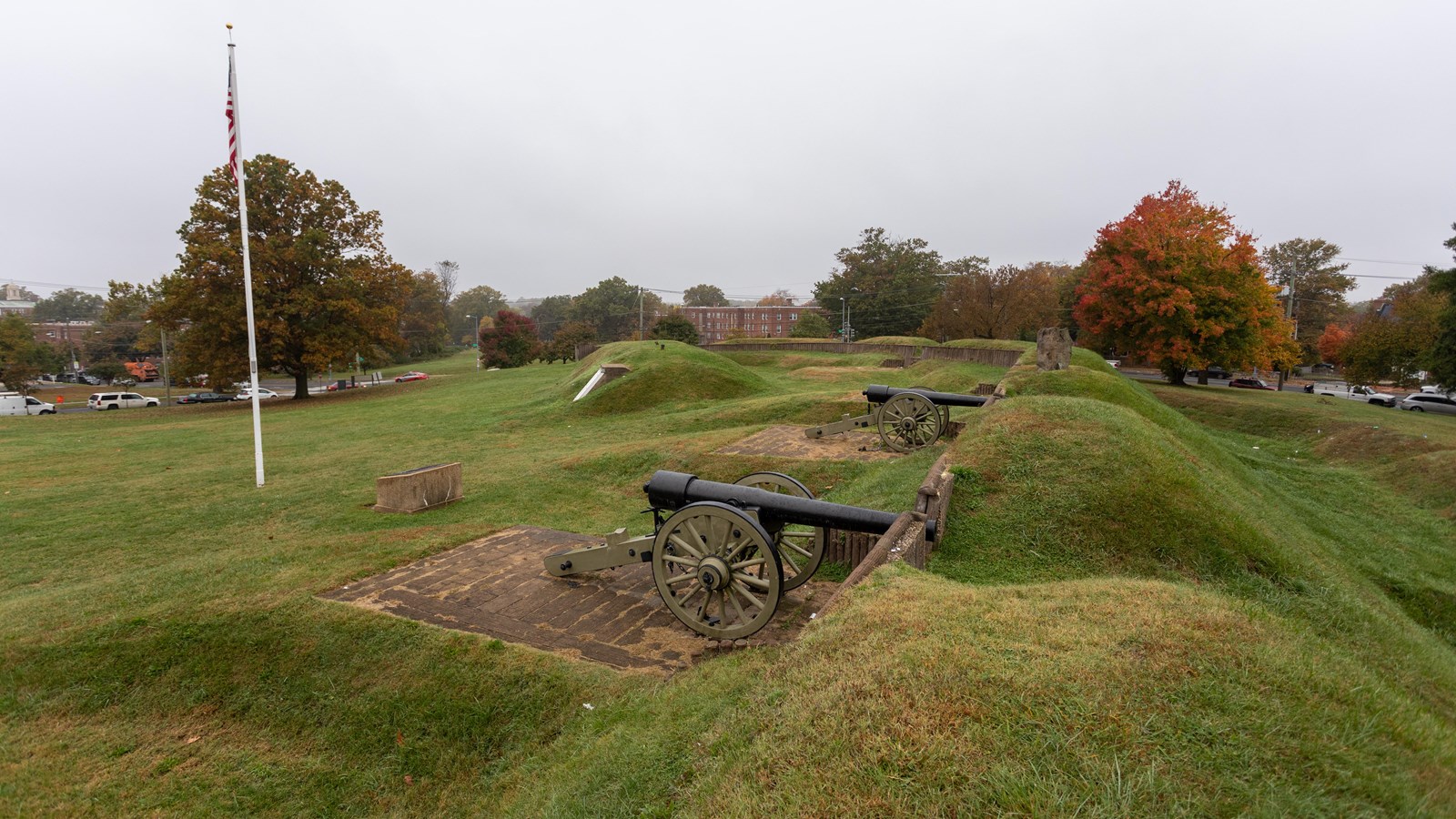Last updated: May 22, 2023
Place
Fort Stevens Park

NPS / Claire Hassler
Historical/Interpretive Information/Exhibits, Parking - Auto, Public Transit, Scenic View/Photo Spot
By the 1890s, Union veterans, civic leaders, and community members desired to preserve the remnants of the Defenses of Washington. The earthen citadels that encircled the capital had long been abandoned by Federal soldiers. Peace, posterity, and the ploughshare returned much of the landscape to its pre-war condition, including Fort Stevens, site of the famed battle in July 1864. Early preservation efforts included the installation of a sign marking the spot where President Abraham Lincoln was under fire on July 12, 1864.
Fort Stevens' eroding earthworks were a lasting testament to the Defenses of Washington as the Brightwood neighborhood developed around it.
As part of the McMillan Plan, a comprehensive planning document for the development of the monumental core and the park system of Washington, D.C (first written in 1902 by the Senate Park Commission), the proposed Fort Drive Parkway consisted of "a new drive-way through the suburbs of Washington to be called 'Fort Drive,' and include in its winding ways some of the most important of the fortifications which served as the Defenses of Washington during the rebellion . . ."
Rapid urban expansion and budget restraints, including the First World War and Great Depression, affected the full development of the parkway; however the Federal government was able to acquire most of the Fort Drive right-of-way between 1929 and 1932, and the forts/batteries managed by the National Park Service today.
In the 1930s, the Civilian Conservation Corps (CCC) accomplished a great deal of work on the fort parks. The CCC established nine camps in the Washington D.C. area, including one, established on October 23, 1933, at Fort Dupont Park. The CCC activities at Fort Dupont included erecting buildings for workers to live and eat in, cleaning up foot and horse trails, performing minor road construction, putting in a sewer, and constructing a two-car garage, carpenter shop, and toilet room. The CCC also performed "forest protection," including cleaning up dead and fallen lumber, burning brush, grubbing stumps, cleaning up the dump, and disposing of trash at forts Stanton, Bunker Hill and Mahan, and doing general cleanup at forts Totten and Foote. At Fort Stevens, the CCC undertook a restoration, reconstruction, and landscape project; costing $25,000. The workers rebuilt the western portion of the fort parapet, using cement "falsies," as one author called them, "instead of logs and planks," because they would last longer.
The work at Fort Stevens was completed in 1938. It was the only fortification restoration project. Today, Fort Stevens Park is managed by the National Park Service (Rock Creek Park).
